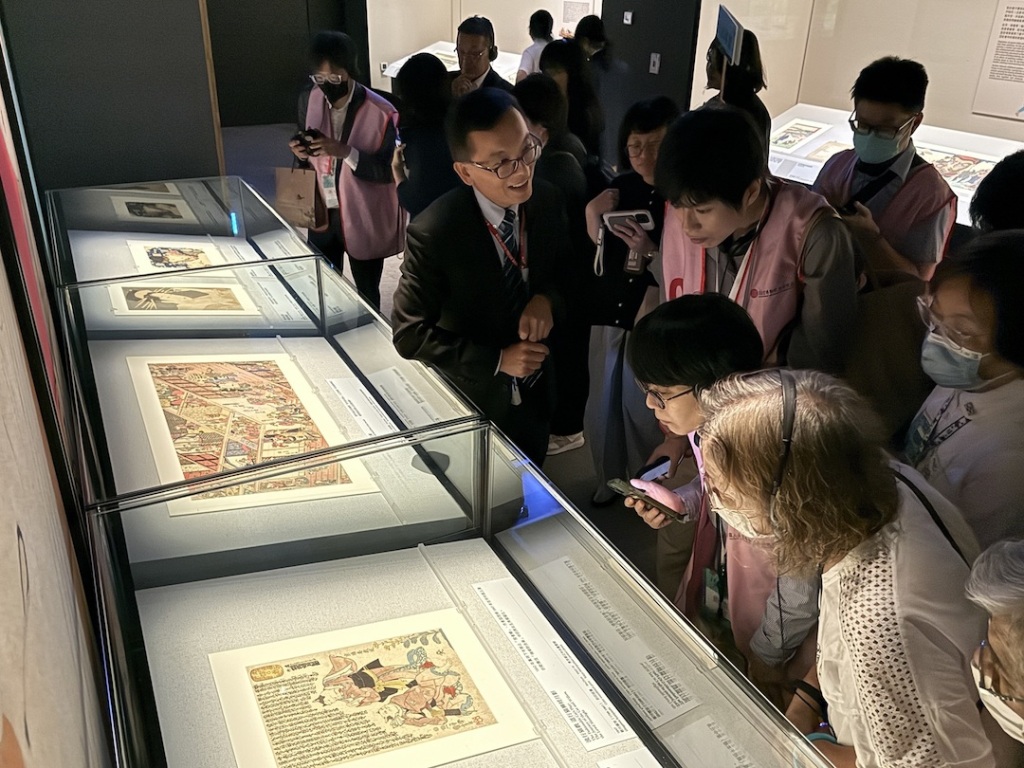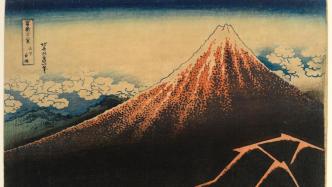
Rabbit is one of the twelve zodiac signs, corresponding to Mao in the earthly branch. The Chinese character "Mao" is a pictograph imitating an open door, and the moon symbolizes the breath of spring coming out of all things. As far as the rabbit itself is concerned, because of its witty and lively image, it is deeply loved in various countries and is often used in artistic creation.
In Japan and South Korea, which are deeply influenced by Chinese culture, the rabbit symbolizes the moon. Artists continue to create works related to it. From the Lin School, the Maruyama Shijo School, to Ukiyo-e, the image of the Moon Rabbit can be seen. In Japan, because of the myth of "the white rabbit of Inaba", the white rabbit is also regarded as the god of love, and "making snow rabbits" in winter is also a tradition. In the ancient Korean peninsula, there is "The Story of the Tortoise and the Hare", which tells the story that the tortoise was ordered by the Dragon King of the East China Sea to take the liver of the rabbit, but the rabbit finally escaped with cunning at a critical moment.

"Birds and Beasts Playing Paintings A Scroll" (partial), Heian period (12th century), in the collection of Kozanji Temple, Kyoto
The most famous work related to rabbits in Japanese painting is "Birds and Beasts Character Play Painting" , which is considered to be the pioneering work of Japanese manga. "Birds and Beasts Plays and Paintings - Juan" depicts various scenes of animals performing sumo wrestling, archery, playing in water, making noise and ritual ceremonies. Among them, Scroll A shows a Japanese folk tale, the protagonists are rabbits and frogs, and the supporting roles are monkeys and foxes. Because of the long history, the story has been lost, but in the picture, rabbits and frogs can ride donkeys, shoot arrows, and dive into the water holding their noses. Almost like a human being.

"Birds and Beasts Playing Paintings A Scroll" (partial), Heian period (12th century), in the collection of Kozanji Temple, Kyoto. The picture shows a scene of rabbits and monkeys playing in the water, in which a rabbit jumps into the water holding its nose.
Moon rabbit, from Chinese cultural tradition
In Eastern cultures, rabbits live on the moon. The mythology of the Jade Rabbit has already been expressed in the cultural relics of the Shang Dynasty; the record of the Moon Rabbit was first seen in Qu Yuan's "Chu Ci Tianwen": "He De, the night light, dies and breeds? Jue Liwei, and Gu Tu is in the belly. "In the Han Dynasty, there was a sentence in "Yuefu Poetry Collection" that "White Rabbit Changzhi Pounds Medicine Shrimp Pills".
In the Tang Dynasty, Liu Zongyuan said in "Tian Dui": "There are many shortages of Xuanyin, and I feel like a rabbit. The shape that is invisible, only God is the kind." The statue of the full moon, the one sitting on the lotus, the moonlight shines on the Bodhisattva. In the Huaxia Yuelun Guidian, there is a rabbit pestle and a person stands, pounding the medicine mortar. The paper is small three inches, the big one is ten feet, and the workmanship is colorful."

Since ancient times, when people see the moon, they will think of the moon rabbit, which symbolizes the spirit of the moon, health, longevity and immortality. The picture shows a rabbit pounding rice under a laurel tree. Photo credit: National Folk Museum
Japan was directly influenced by the culture of the Tang Dynasty, but in Chinese mythology, the Moon Rabbit pounded medicine, and even evolved into the legendary Rabbit God who eliminated the plague. The moon rabbit in Japanese mythology pounded rice on the moon. In South Korea, from the murals of the ancient tombs of Goguryeo to the Chinese poems, folk paintings, and word-of-mouth literature of the Joseon Dynasty, there are rabbits related to the moon. rabbit.

Matsumura Goshun, "Full Moon Rabbit and Pestle", woodblock origami, 1801/1850, British Museum Collection
Both "rice milling" and "full moon" are read as "mochizuki" in Japanese, which shows the relationship between the two.
"Orimono" is a limited number of prints printed by ourselves, usually given to relatives and friends. Such works are usually the collaboration between painters and members of poets. For example, this "Full Moon Rabbit Pestle" is printed with seventeen poems, all of which record or express the changes of seasons.
The author Matsumura Goshun (1752-1811) was one of the greatest painters of the late Edo period, as well as a talented poet and calligrapher. He founded the "Yuanshan Four School", trying to combine the realistic sketching of Yuanshan Yingju (1733-1795) with the idealism of the Chinese literati school. The "Maruyama Shijo School" had a profound influence on Japanese art in the 19th century.
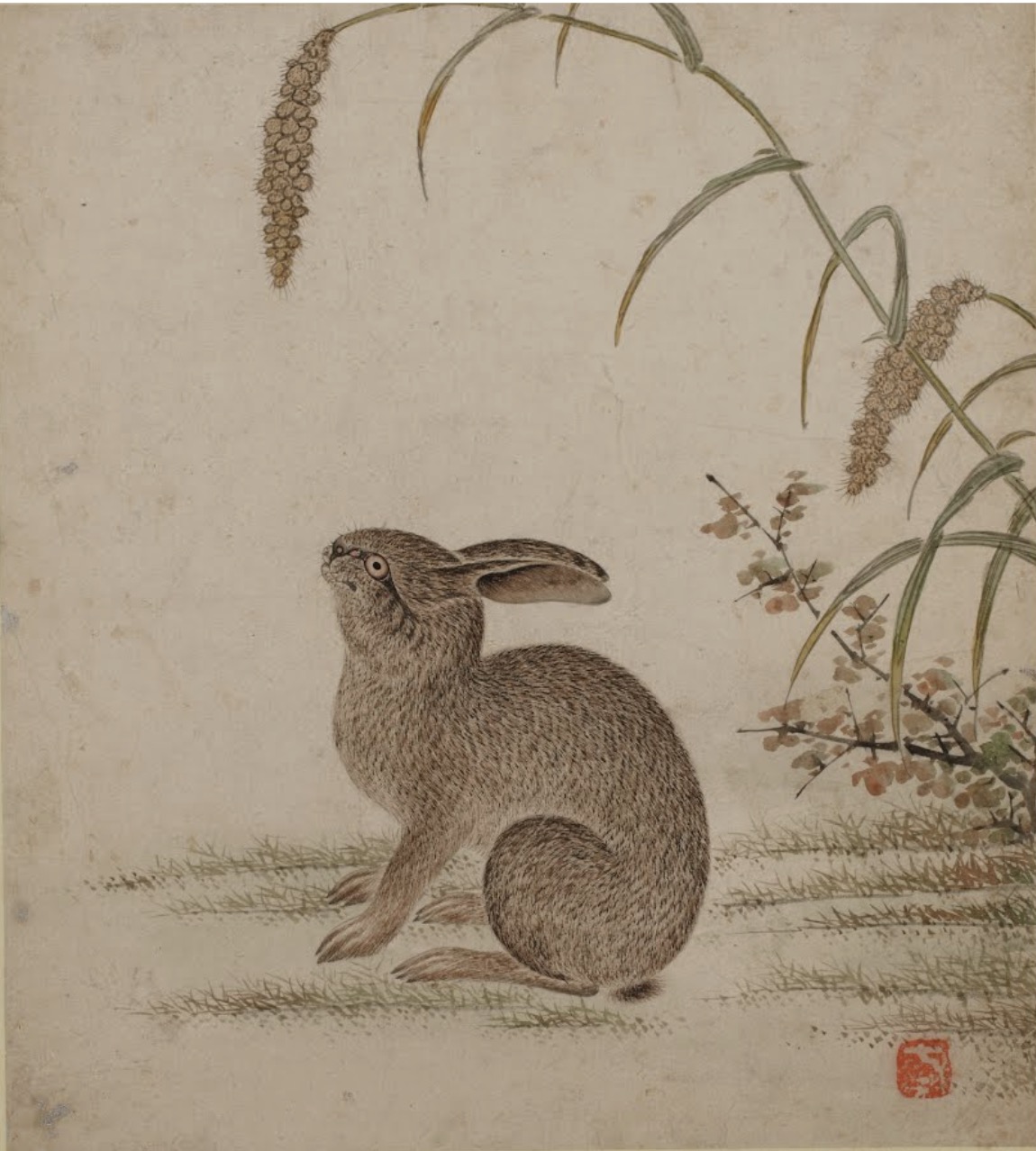
Choi Buk, "Rabbit", Joseon Dynasty, 18th century, Horin Museum, Seoul
During the same period, the Korean peninsula was also influenced by Chinese paintings. Choe Buk (1755-1785), a painter of the late Joseon Dynasty, was famous for his landscapes with the moist atmosphere of the Southern sect. In addition to landscapes, he is also good at feathers. In "Rabbit", the still rabbit and the simple background create a peaceful atmosphere, demonstrating the painter's fine-grained description skills in expressing objects.
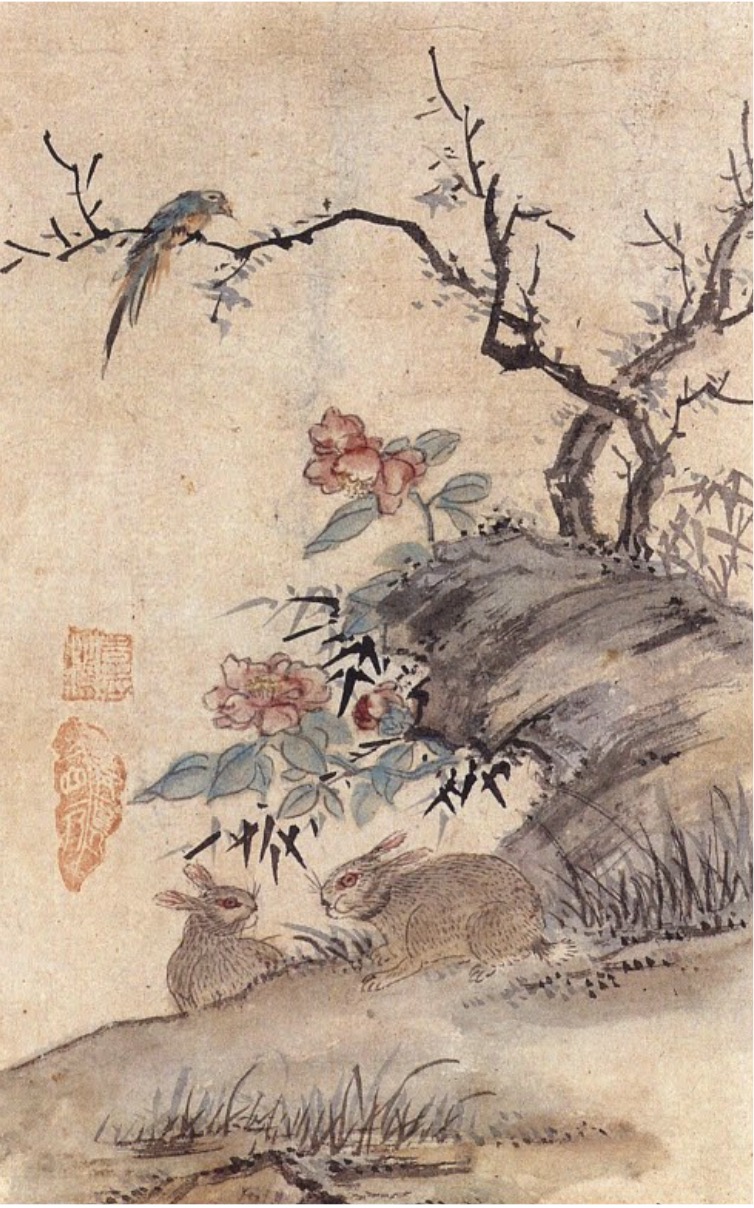
Shim Sa-jeong, "Two Rabbits in Spring", 1707/1769, 18.1x28.2cm, in the collection of Gunsong Museum of Art, Seoul
Sim Sajeong (1707-1769) and his teacher Jeong Sun are both representative figures of literati painters in the Joseon Dynasty in the 18th century. influenced by the teacher. He is good at various genres such as literati painting, landscape painting, bird and animal painting.

Anonymous, "Rabbit and Autumn Grass Six-fold Screen", 1600/1799, 153.7×331.3cm, collected by the British Museum
There are 12 rabbits painted on the screen. Most of the rabbits in the painting are looking for food, and some of them are chasing each other. Rabbits of this size are rare. This kind of screen usually appears in pairs of rabbits and crows. When placed, the rabbit is on the right and the crow is on the left. Since ancient times, the East Asian world headed by China has used rabbits to symbolize the moon and crows to symbolize the sun. This is a continuation of the tradition of the Western Han silk painting unearthed at Mawangdui, "There are crows in Japan and China, and Gu Tu in the moon palace".
In "Rabbit and Autumn Grass Six-Fold Screen", the rabbit's fur is rich in color, which makes the work more delicate and rich. The eyes are detailed to make them look vibrant. The background is plants swaying in the breeze, or related themes from Japanese classical literature.
The screen is not signed, but the overall style and rabbit shape suggest that it was painted by a Rinpa artist in the mid-18th century, a generation after Korin Ogata (1658-1716).

Kohara Komura, Rabbit in the Moonlight, circa 1910, in the collection of the Sackler Gallery, Smith Institution, Washington
In the Japanese Buddhist story "Konja Monogatari Collection", the rabbit who sacrificed his life to do good and used his body as food for the elderly, Emperor Shitian was deeply moved, and mapped the figure of the rabbit in the ashes to the moon, so that all living beings can see To the moon rabbit who gave up his life to walk the Bodhisattva way.
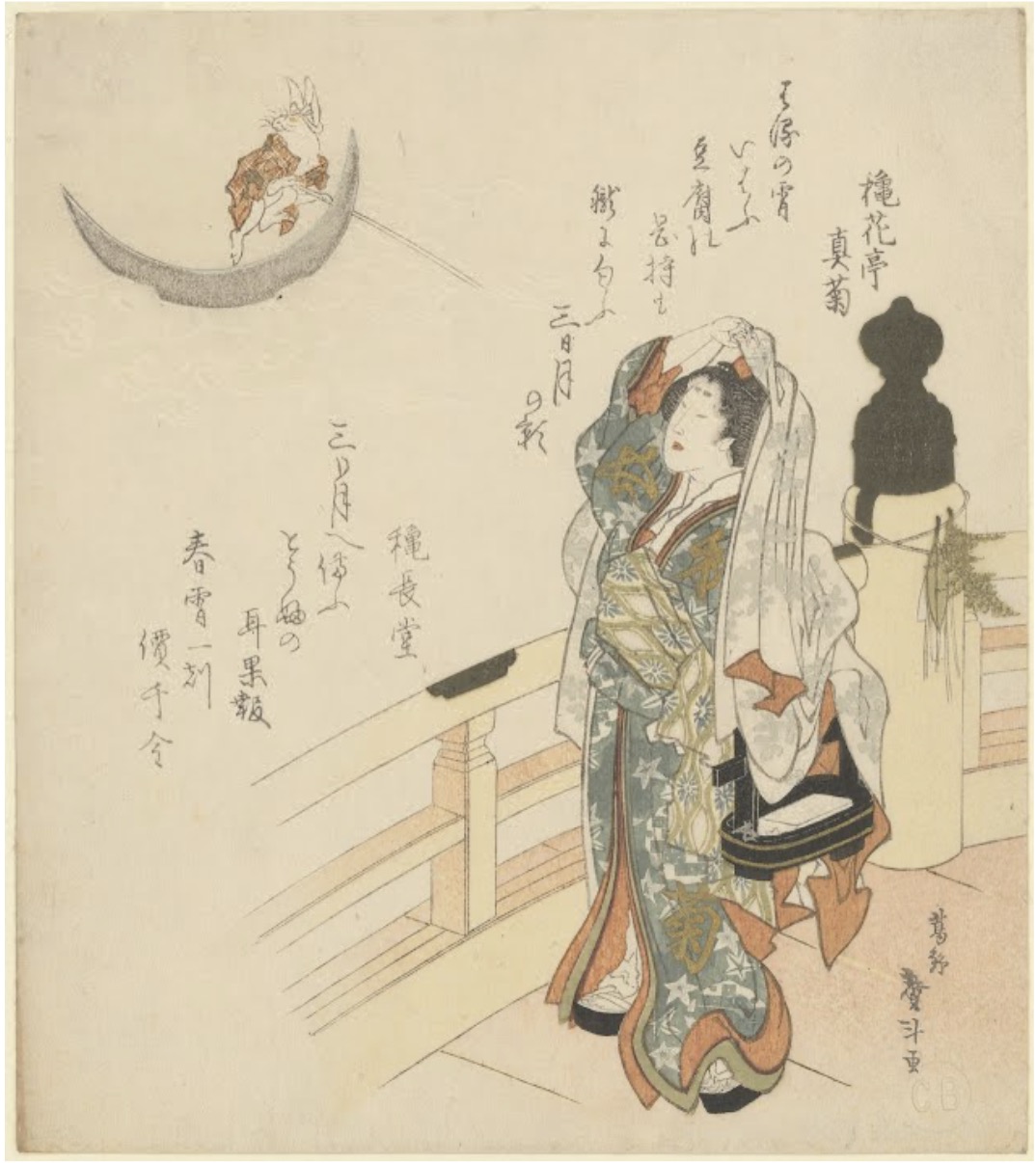
Katsushika Hokusai, Watching the Rabbit Draw the Crescent Moon, 1819, Chester Beatty Library, Dublin
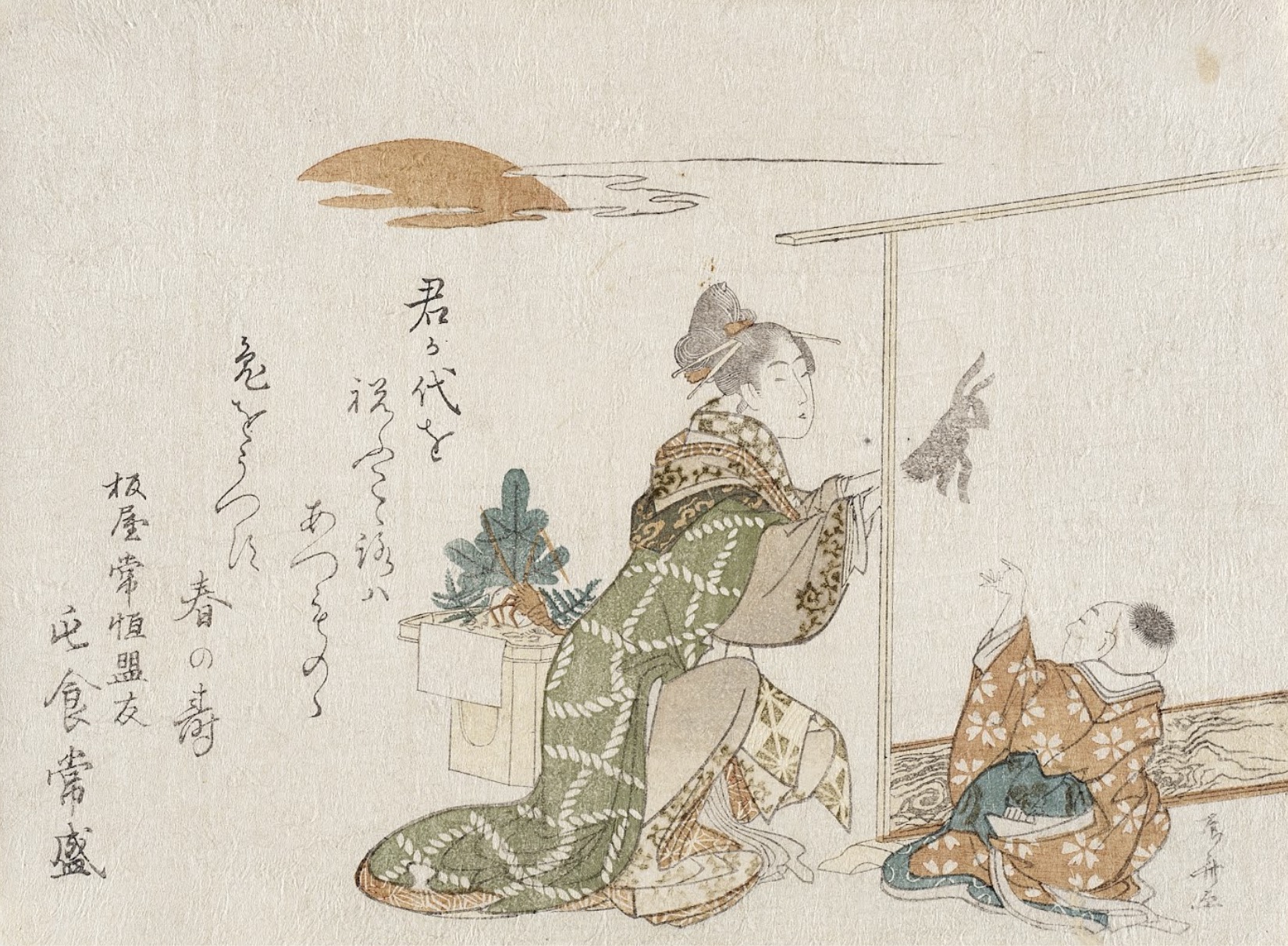
Liu Liuju Chenzhai, Rabbit Shadow Play and Boy, 1807, 13.8x18.8cm, Los Angeles County Museum of Art

Yoshinen Tsukioka, Jade Rabbit Sun Wukong in the Moon Series, 1889.1, in the collection of the Sackler Museum of Art, Smith Institution, Washington
In Korea, General Rabbit is also considered to be the incarnation of "Shuiyue Pizza", responsible for lighting up the night sky. "Water Moon Pizza" came to the world in the form of a rabbit, in case people would confuse the moon with the reflection in the water. General Rabbit symbolizes the will and endurance to overcome adversity, and he promises to prevent chaos by eliminating the reflection of the water moon.
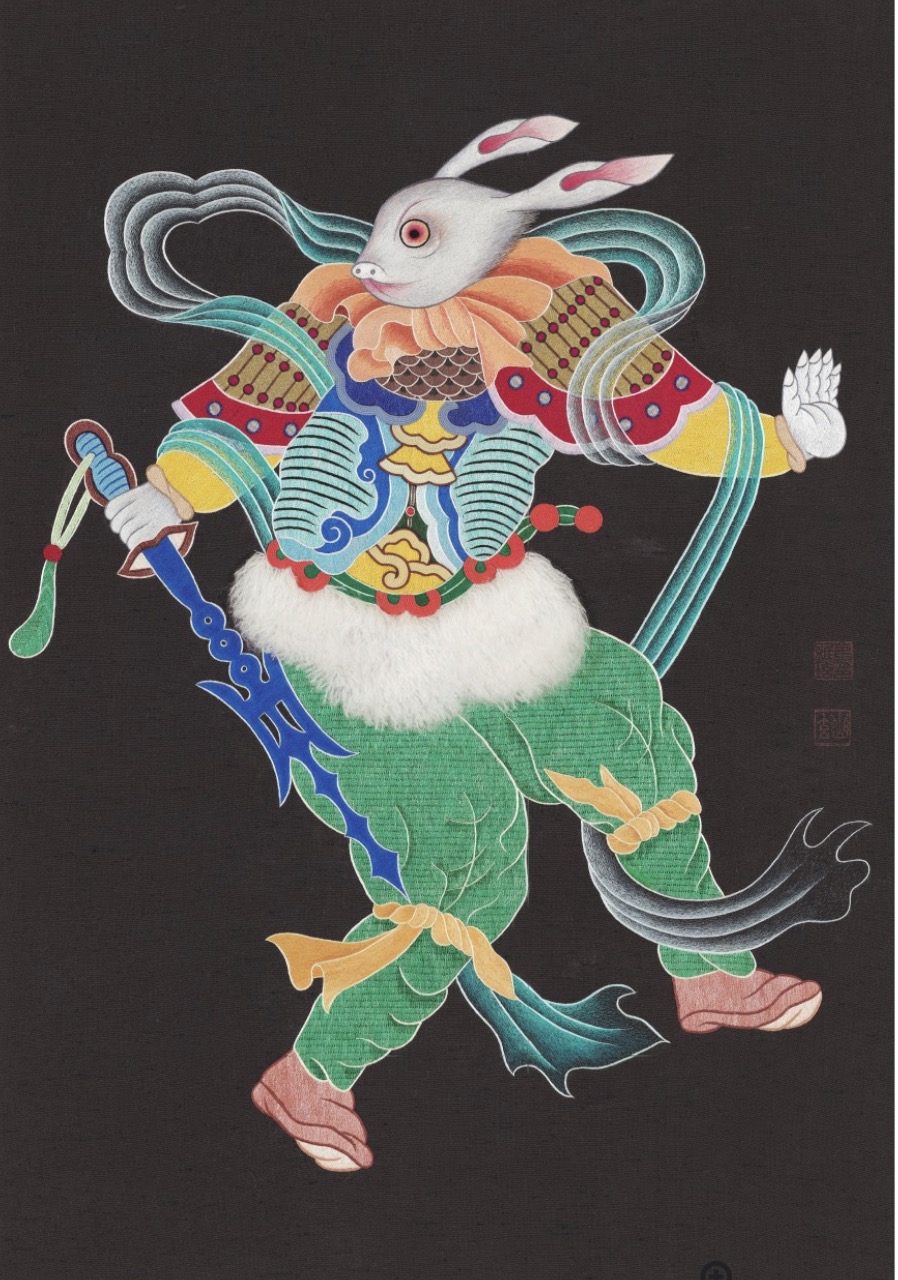
Choi_Yu-Hyun, General Rabbit of the Chinese Zodiac, 1983/1985, Collection of the Cultural Museum in Jeonju, South Korea
"The White Rabbit of Inaba" Creates the God of Love
"The White Rabbit of Inaba" comes from the Japanese mythology "Kojiki". According to the content of the first volume of "Kojiki", there are 80 brothers in total, and the main god of the great country has given up the right of inheritance, and the former will rule Izumo. However, things are not so smooth. The 80 gods admire the beauty of Inaba (now Tottori Prefecture), Yagami Himi, and set off for Inaba together, and Oanamochi God (that is, Okuni Lord God) carries everyone's luggage bags. Before arriving at Qita (now the White Rabbit Coast, Tottori City, Tottori Prefecture), the eighty gods saw a naked rabbit with no skin lying on it halfway, and told them: "You can take a bath in the sea, and then go to a high place to dry it. Let the wound heal." The white rabbit did as they said, but the whole body was cracked and painful.

Gauntlet (of sword), Rabbit and Wave, circa 1615-1868, 8.4 x 9 cm Cleveland Museum of Art
Afterwards, Daxue Mochi God asked what happened to the white rabbit, and the latter replied: "I was planning to cross here on Yuqi Island, but I deceived the sea crocodiles and said, 'Let's compare and see if you have more sea crocodiles, or we have more rabbits. Many. You all lined up on the sea to the coast of Qiduo. I walked one by one and counted, so that I could know which clan was more numerous.' They really lined up and let me walk to the coast of Qiduo, but I I was overjoyed and said, "You idiots!" The sea crocodile at the end actually skinned my whole body. Later, I met eighty gods, and they taught me to take a bath in the sea, and then go to a high place to dry , but made my whole body in excruciating pain!"
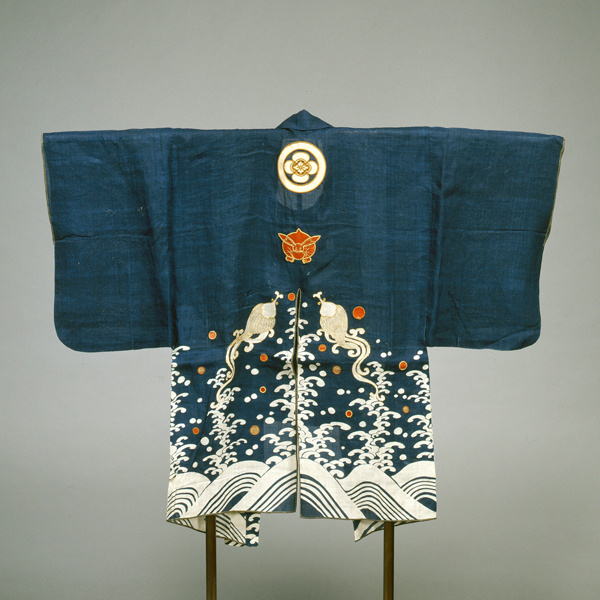
Rabbit rain dragon pattern Tibetan blue linen, Edo period · 19th century, Tokyo National Museum Collection, this is a firefighting costume for women of the samurai family, designed with patterns of rabbits, rain dragons, etc. praying for rain in the waves.
So Daxue Mochi God taught the white rabbit to go to Shuimen to bathe his body with river water, and then take the pollen of cattail pollen by the river, and roll it on the pollen to recover. The white rabbit followed the instructions, and sure enough, the pain in the skin was no longer severe, so he told God Mochi: "The eighty gods will not win the heart of Bashang Bimei. Although you are carrying a luggage bag, you will definitely win her heart."
From this story, White Rabbit is extended to be the Japanese god of love, Rabbit on the Wave, which has been often used in crafts and fabrics since ancient times.
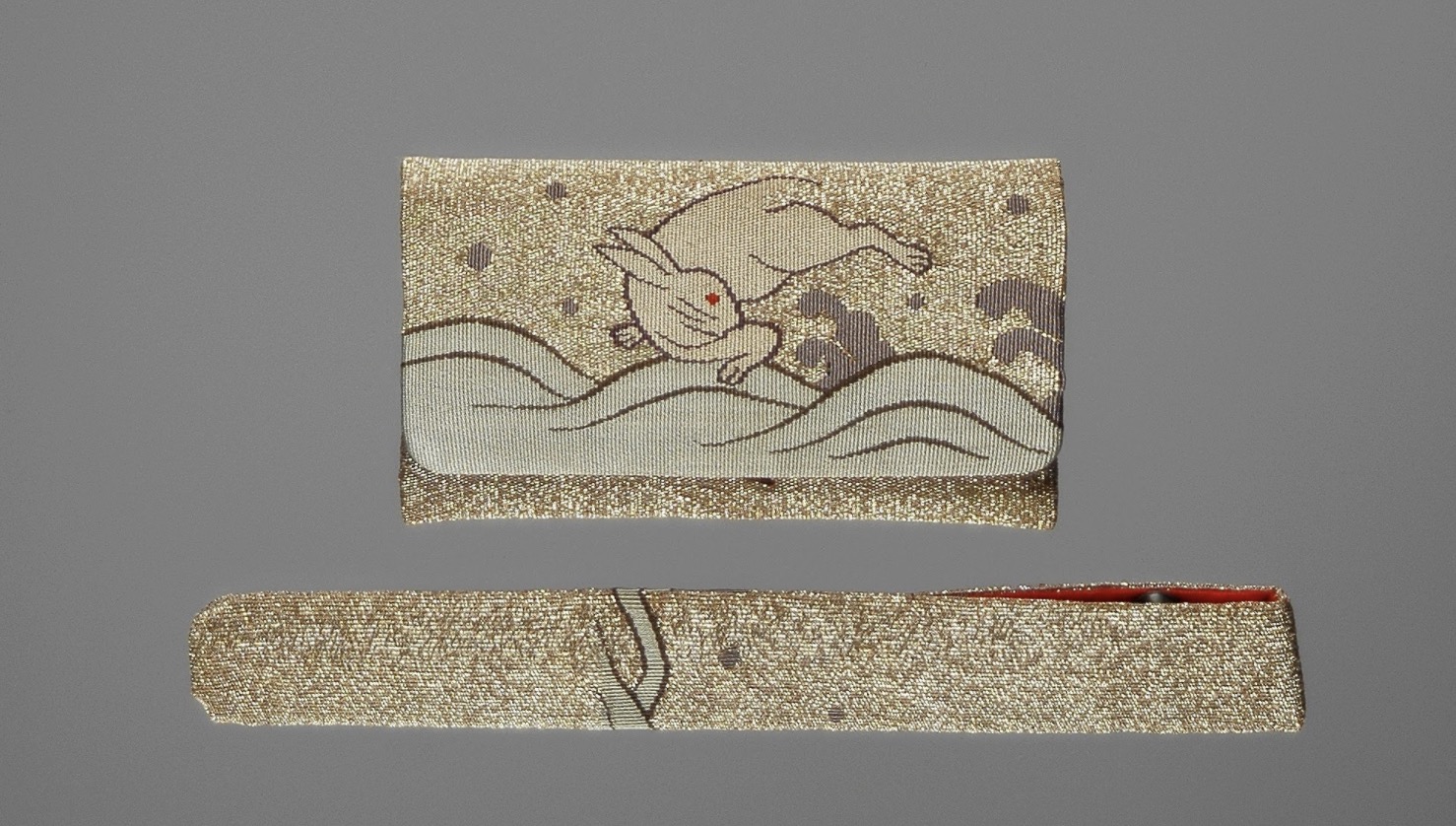
Tobacco pouch, Sumida Tobacco and Salt Museum, this is a pouch specially designed for women. This type of pouch is tucked into the folds of the kimono.

Anonymous, "Hundred Rabbit Fabric", 1860/1867, Edo Ise Type Paper Museum Collection
Snow bunny, small and cute, indoor ornamental
Since the Edo period in Japan, "Snow Rabbit" has been the most popular image of "Snowman" in Japan. In many Ukiyo-e works, rabbits made of snow appear.
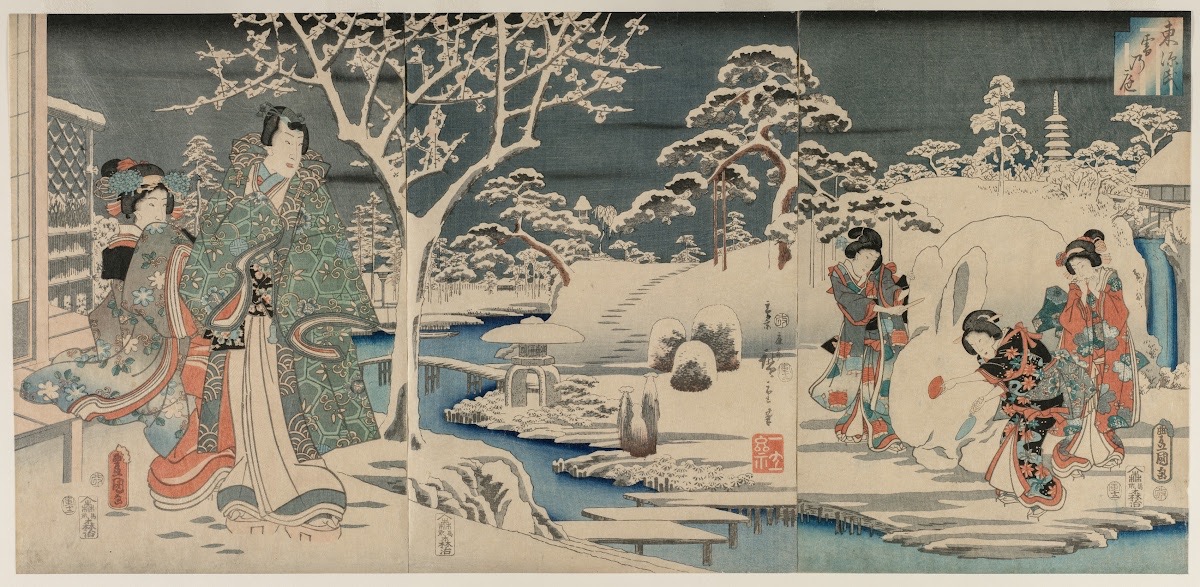
Utagawa Kunisada and Utagawa Hiroshige, Paradise in the Snow, 1854, 35.6 x 75cm, Cleveland Museum of Art
"The Tale of Genji" is a work adapted from "The Tale of Genji" by Liu Tingzhonghiko and Ukiyo-e painters. "Snow Paradise" is one of the volumes. In the painting, three women are making a huge snow rabbit. The hero and his lover stand in the snow. From the perspective of the style of the work, Utagawa Kunisada drew the characters and snow rabbits, and Utagawa Hiroshige designed the background. Both ukiyo-e artists signed. Ukiyo-e artists usually cooperate to complete the part they are good at in the works related to "Genji Murasaki".

Harunobu Suzuki, Young Woman Admiring a Snow Rabbit, late 1760s, 28.2x21.2cm, Cleveland Museum of Art
But in most of the works, the snow rabbit is not as huge as it is now, but is placed on a plate and presented indoors for viewing. The amount of snow used for snow rabbit modeling is small and can be collected quickly. It only needs to form an ellipsoidal snow ball to complete the body of the snow rabbit. For decorative snow rabbits, nandina is most commonly used. Sometimes, pine needles are used to attach whiskers to snow rabbits.
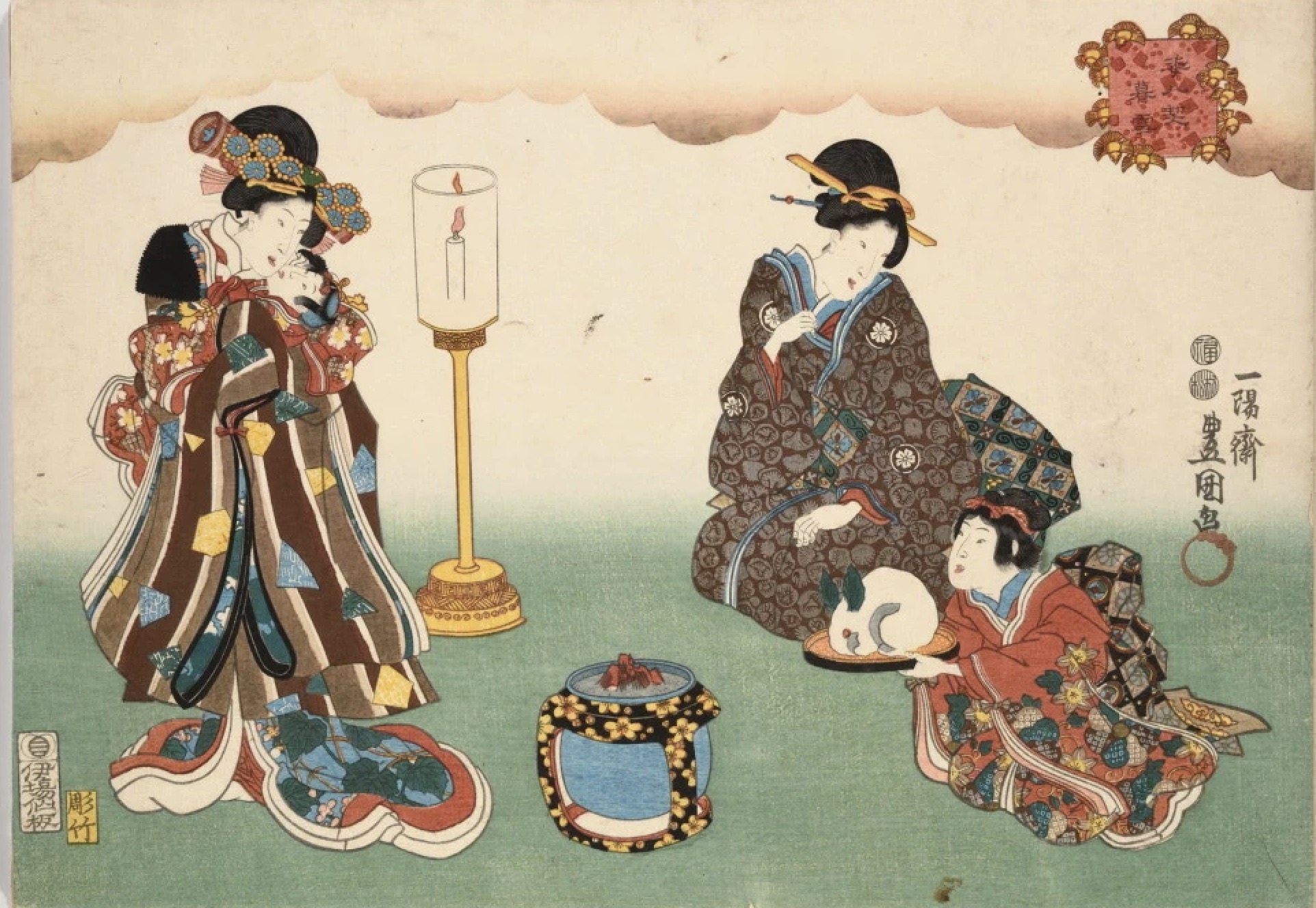
Kunisada Utagawa, "Twilight Snow", from "Eight Stories of Posture", 1850, in the collection of the Metropolitan Museum of Art, USA
In addition to paintings, rabbits are often seen on plates and carvings. The rabbit symbolizes the growth, prosperity and abundance of all things. According to the results of a recent survey, rabbits are considered to be familiar and beloved animals of all ages, from toddlers to adults. Perhaps because of this, it is used as a design material for various children's products and life tools. Cartoon products that visualize the appearance of rabbits are very popular. Rabbits have become one of the meaningful animals in emotion and culture.

Heguo Xiaozhai, "Autumn Eagle and Rabbit Fighting", 1885, 166.4x83.8cm, collected by the Metropolitan Museum of Art, New York
For example, the double rabbit picture, which depicts a close pair of rabbits, symbolizes the love of husband and wife and a harmonious family; the autumn eagle and rabbit fighting picture, which shows an eagle looking at the rabbits, is a representative topic of New Year pictures celebrating the New Year. On the occasion of the New Year, with the mood of blessing, I use the rabbit in the art to send readers New Year greetings.
Attachment: the picture in the handicraft
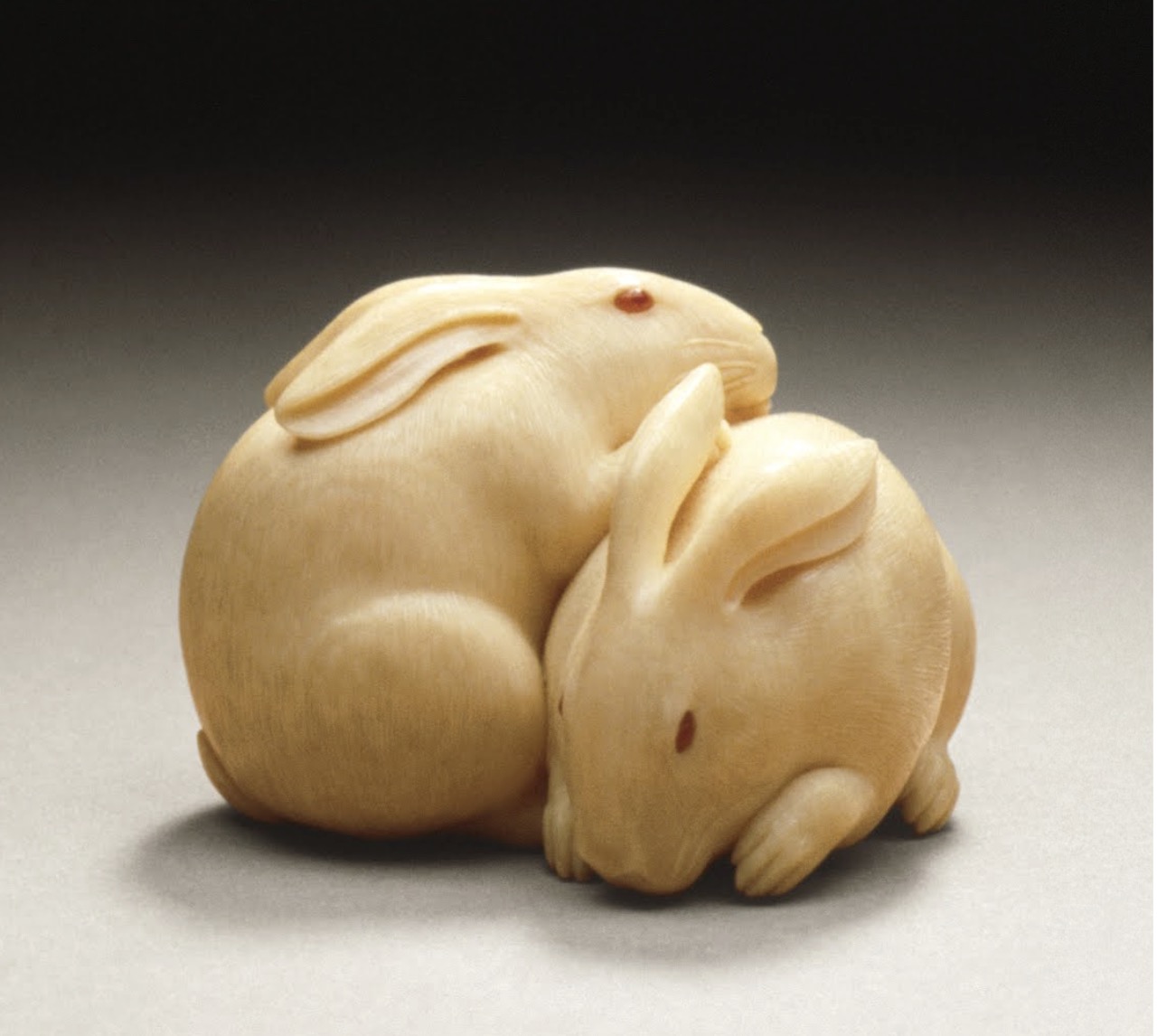
Zhengji Huaiyuzhai, "To the Rabbit", mid-to-late 19th century, in the collection of Los Angeles County Museum of Art
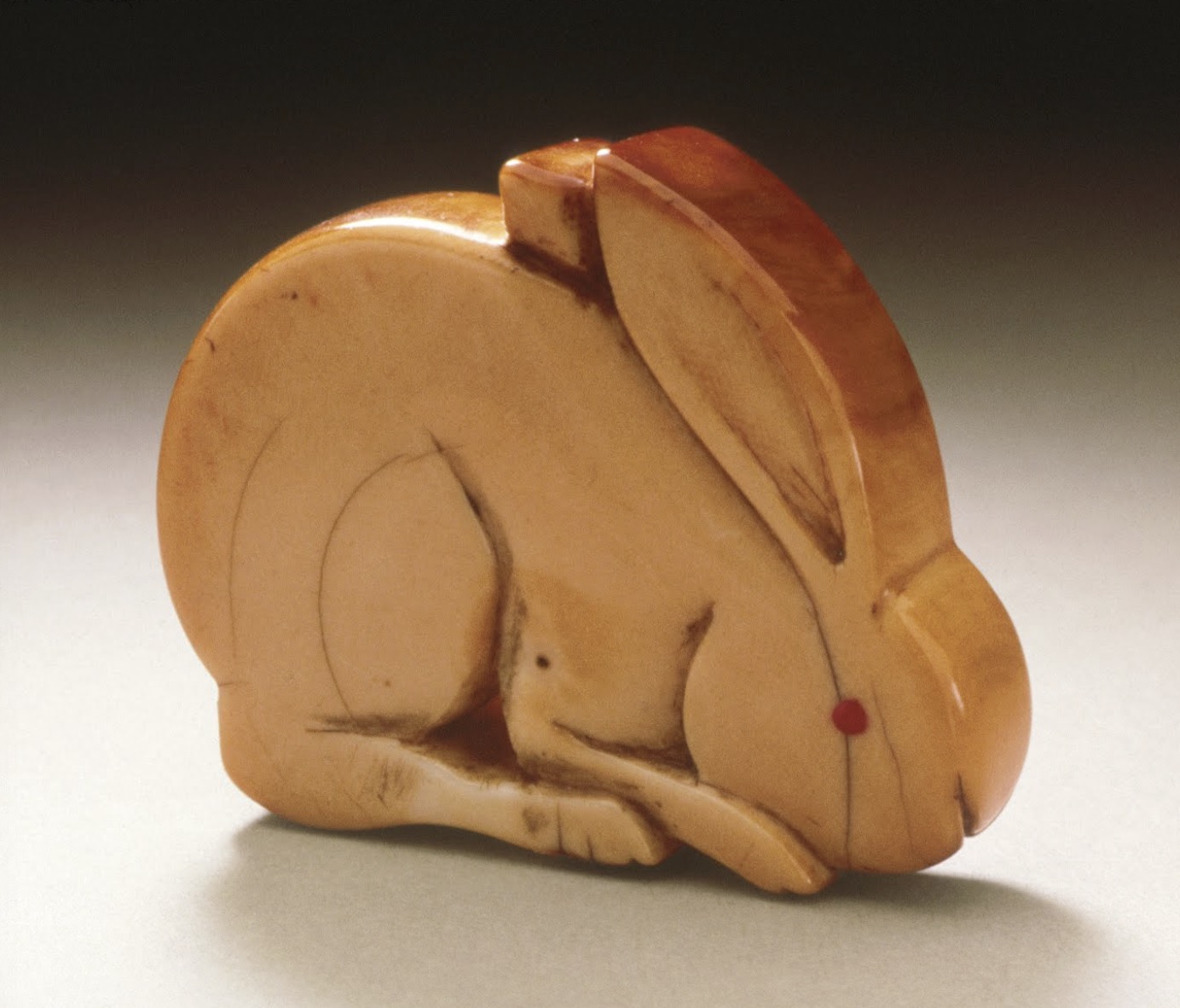
Anonymous, Two-Faced Rabbit, 19th century, Los Angeles County Museum of Art
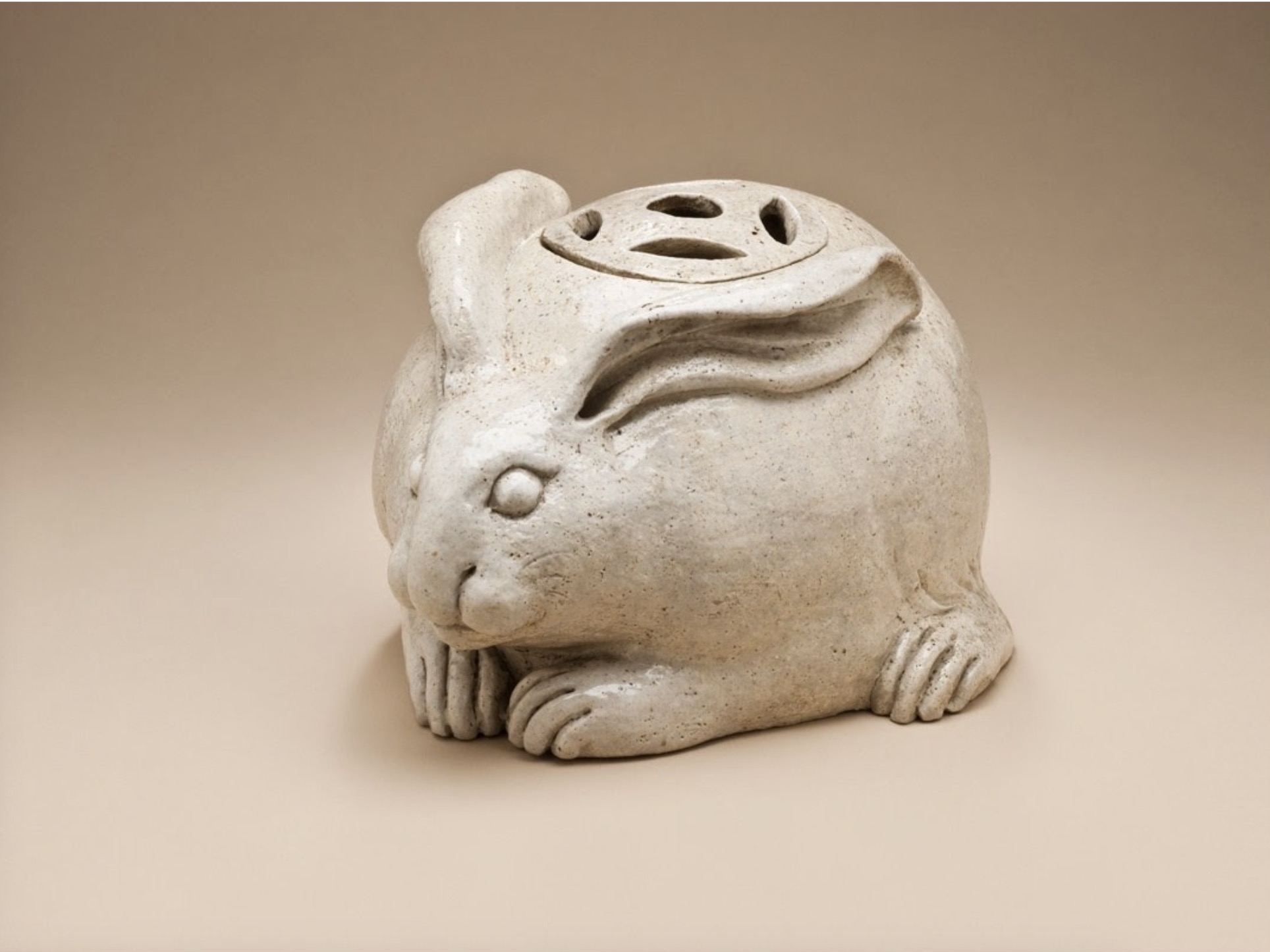
Yongle Baoquan, Rabbit-shaped Hand Warmer, circa 1840, clear-glazed ceramic, Los Angeles County Museum of Art

Rabbit Water Drops, Edo Period, 18th-19th Century, Collection of Tokyo National Museum
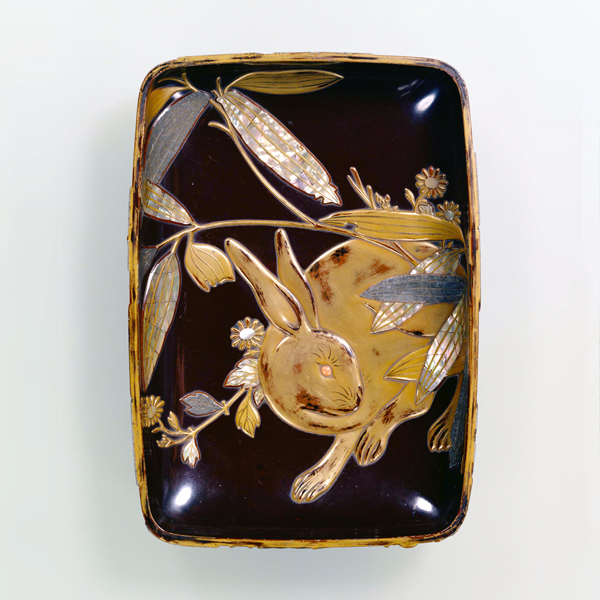
Handed down by Nagata Yuji, Makie Mother-of-pearl Inkstone Box, Edo Period·19th Century, Collection of Tokyo National Museum
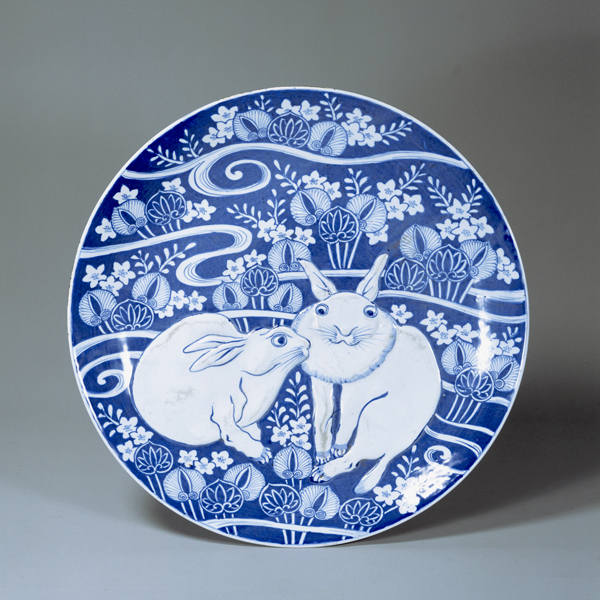
Water sunflower rabbit plate, Imari, Edo period · 19th century, Tokyo National Museum collection
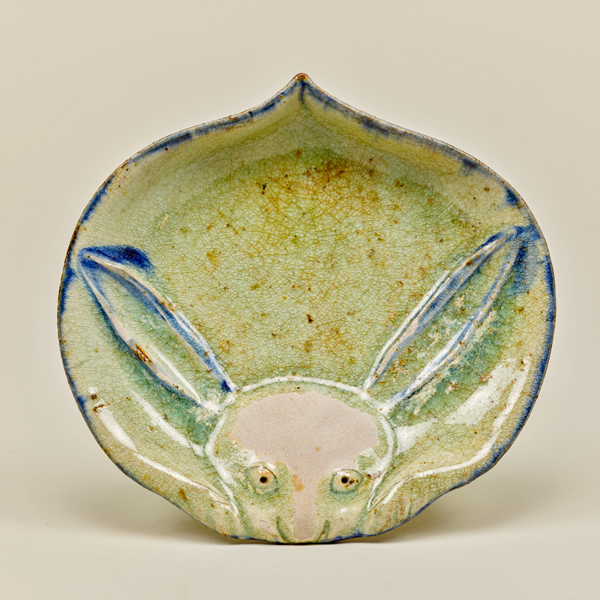
Rabbit plate, Gobuk well, Edo period · 19th century, Tokyo National Museum collection
